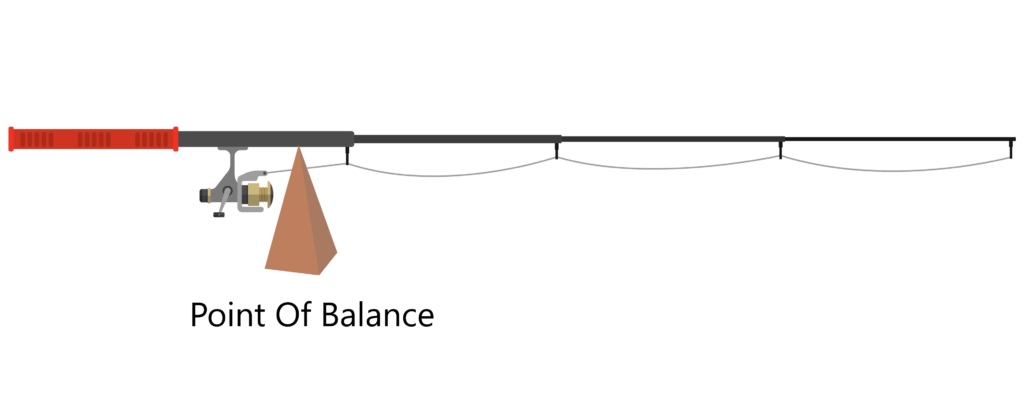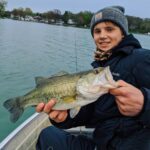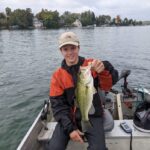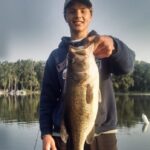Hey there anglers! I know, I know. Finesse bass fishing isn’t always the most glamorous and exciting technique to talk about, but there are definitely days when it is necessary. Sometimes the bass just won’t cooperate for whatever reason, and light line and downsized lures are the only thing that will get them to bite. Today, we’re diving into the world of finesse bass fishing – a go to technique for many anglers when the bite gets tough. Finesse fishing is a broad category and we’ll look to simplify it and provide gear and lure recommendations as well. Whether you’re a pro looking to up your game or a newbie eager to learn the ropes, this article is for you.
As always, fishing education and conservation are our priorities here at The Angler’s Line. Feel free to sign up for our free newsletter to join our community and stay up to date! Lets get started!
Table of Contents:
What Is Finesse Fishing?
Before we can dive deep into finesse bass fishing, it’s important to understand what finesse fishing actually means. Simply put, finesse fishing is downsizing your tackle. This typically means transitioning from a baitcasting setup to a spinning setup. However, finesse fishing with a baitcaster has been made popular in recent years with the introduction of the bait finesse system. Regardless of which type of rod you choose, the key is to use a lighter line and smaller lures.
When Should You Switch To Finesse?
Now that you know what finesse fishing is, let’s talk about a few situations were this technique truly excels.
Clear Water
Clear water is a situation where finesse fishing tends to shine in my opinion. Bass in these systems tend to be slightly more wary and have the ability to inspect your lure much closer. Another thing to keep in mind is that bass in clear water rely on their sense of sight to feed compared to dirty water, where sound and vibration are more important. For that reason, downsizing your lure and presenting the bait as natural as possible is crucial when fishing clear water.
Pressured Fish
If you fish heavily pressured lakes, finesse fishing is your friend. In some of these lakes, bass have pretty much seen it all. The key to catching a few of those fish is to use a lure that not many other people are using. A good way of doing this is downsizing and finesse fishing.
Rising Barometric Pressure
Weather is another factor to consider when determining whether or not to finesse fish. Typically bass tend to get in a negative mood post front, which coincides with rising barometric pressure most of the time. Think of barometric pressure as the air and water pressure pushing down on the fish. As the barometric pressure rises, so does the pressure on the fish. This tends to shut down the bite a lot of the time. Finesse fishing in this situation will allow you to capitalize on a few more bites.
Essential Gear For Finesse Bass Fishing
Finesse fishing is one of those techniques that requires specialized gear. The three main pieces of equipment that you’ll need are an appropriate rod, reel, and fishing line setup.
Rod
Most of the time, finesse fishing uses a spinning rod. However, as I hinted at earlier, the new bait finesse system has given anglers the choice of using a baitcasting setup as well. Regardless of which style of rod you choose, look for a rod between a light to medium power. Additionally, I recommend a rod between 6’6″ and 7′ for most applications.
Reel
As far as reels go for finesse fishing, the key is to balance your specific reel to the rod that you will be using. Anglers get caught up on spool size a lot of the time, but weight is really what matters. Ideally you want the rod to balance just in front of the reel stem (see picture below). A good starting point for a spinning reel is around a 2000 size.

Line
A lot of fisherman will tell you two completely different things when it comes to fishing line. One thing that is agreed upon however, is that you need line with a thin diameter for finesse applications. I generally recommend choosing a line between 6-10 lb test. If you plan on using braided line, you can get away with 10-20 lb test since its line diameter is much thinner than fluorocarbon or monofilament. I like to run a braided line with a fluorocarbon leader for most finesse techniques. The braided line gives me superior feel while the fluorocarbon leader prevents bass from seeing the line.
Finesse Lures and Rigs For Bass
Now that you’re geared up with the correct equipment, let’s talk about what to tie on to the end of your rod.
Finesse Swimbait
When I think of a finesse swimbait for bass, I typically think of a swimbait between 2.5″ to 3.5″ in length. Swimbaits are extremely versatile and allow you to cover water while fishing a variety of different types of cover and depth ranges. For bass, choose the lightest jig head weight that you can get away with for the depth you are fishing. Generally, I like to cast the swimbait out and let it reach bottom. I then use a slow and steady retrieve, keeping the swimbait within a few feet of bottom. Avoid using and sudden pops or twitches in your retrieve with the finesse swimbait. Slow and steady wins the race in this situation.
Ned Rig
If you’ve been paying attention to bass fishing lately, I’m sure you’ve heard of the ned rig. Essentially, the ned rig is a small soft plastic worm with a jig head. This bait doesn’t look like much yet seems to catch fish when nothing else will. Once again, I recommend choosing the lightest jig head that you can get away with. There really isn’t a right and wrong way to fish this bait, making it a great option for beginners. Slowly work the bait in along bottom and I’m sure you’ll find success.
Bonus Tip: Try using bright and bold jig head colors with this technique. Chartreuse is one of my favorites.
Drop Shot
For those that don’t know, a drop shot is a rig in which your hook has a dropper that is attached to a weight at the bottom. The beauty of the drop shot is that your weight remains on bottom while your hook and bait remains suspended just off bottom. Experiment with the length of dropper that you use. If you notice fish sucked close to the bottom, shorten your dropper length to only a few inches. If fish are suspended higher off bottom, lengthen your dropper length to several feet. As far as baits go, most soft plastics will do the trick. Small soft plastics worms, flukes, and paddle tail swimbaits are some of my favorites.
Weightless Wacky Rig
The weightless wacky rig is one of my favorite finesse rigs to use when bass are located in shallow water around cover. Piers, weed beds, and submerged timber are great areas to use a weightless wacky rig in. Hook a soft plastic stick bait in the middle, leaving an equal length on either side of the hook. Cast it out near the cover and let it fall on slack line. Twitch the wacky rig a few times if nothing strikes before letting it fall again. Watch your line carefully with this technique since almost all of the bites occur on the drop. You’ll see your line jump, indicating that you have a bite.
Finesse Bass Fishing Location
The truth is that finesse fishing works in just about every location on a body of water where bass live. There is no specific areas that are better than others, instead just focus on areas that have concentrations of fish. The key with finesse fishing is to downsize your tackle in those same areas where everyone else is fishing with traditional baits. For example, a school of bass may be located on a mid lake hump and anglers are targeting them with 4″ paddle tail swimbaits. Go through that same areas with a 3″ finesse swimbait and you’ll more than likely catch fish since they haven’t seen that size of bait much. This same rule applies to all locations on the water.
Conservation and Ethical Fishing Practices
As responsible anglers, it’s crucial to prioritize conservation and practice ethical fishing

Catch and Release
Adhere to catch-and-release guidelines whenever possible to preserve the bass population for future generations. Handle fish with care, use barbless hooks to minimize injury, and return them to the water as quickly and gently as possible.
Regulations and Limits
Stay informed about local fishing regulations and adhere to size and bag limits. These limits are in place to ensure sustainable fish populations and healthy ecosystems. Ignorance is no excuse, so take the time to familiarize yourself with the specific regulations in the areas you fish.
Leave No Trace
Respect fish and wildlife habitats by minimizing your impact and leaving the environment as pristine as you found it. Dispose of any trash properly and consider participating in organized shoreline cleanups. Respecting nature and its resources is crucial for future generations of anglers to enjoy.
And there you have it – a crash course in finesse bass fishing. From identifying when to use finesse techniques to gear essentials and specific lure recommendations, you’re now equipped to finesse those bass like a pro. Remember, finesse fishing requires light line and specialized gear. Fish slowly and be patient. Finesse fishing is not the answer when bass are feeding aggressively, but instead helps you catch a few more fish during tough conditions. So next time you’re out on the water, put your newfound knowledge to the test and try finesse fishing for bass. Tight Lines!
More Bass Fishing Articles:






